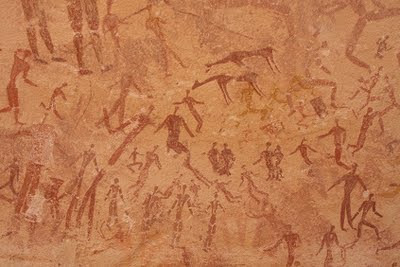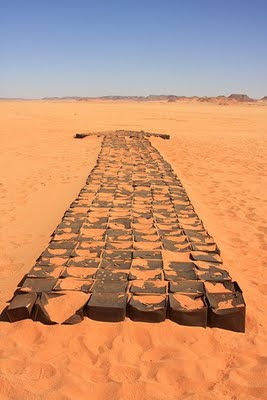American Journal of Archaeology Online ReviewsThere are a couple of articles which may be of interest (particularly the review of the
Rosalie David book), but I've copied the whole lot into the post in case there are those of you who have wider interests.
Book Reviews
The Nation and Its Ruins: Antiquity, Archaeology, and National Imagination in Greece
By Yannis Hamilakis
Reviewed by Gullög Nordquist
http://www.ajaonline.org/pdfs/book_reviews/113.3/01_Nordquist.pdf
The Oxford Handbook of Engineering and Technology in the Classical World
By John Peter Oleson
Reviewed by Robert L. Hohlfelder
http://www.ajaonline.org/pdfs/book_reviews/113.3/02_Hohlfelder.pdf
Cult in Context: Reconsidering Ritual in Archaeology
By David A. Barrowclough and Caroline Malone
Reviewed by Emily Miller Bonney
http://www.ajaonline.org/pdfs/book_reviews/113.3/03_Bonney.pdf
The Archaeology of Ritual
By Evangelos Kyriakidis
Reviewed by Emily Miller Bonney
http://www.ajaonline.org/pdfs/book_reviews/113.3/03_Bonney.pdf
Distorting the Past: Gender and the Division of Labor in the European Upper Paleolithic
By Linda R. Owen
Reviewed by Giovanni Boschian
http://www.ajaonline.org/pdfs/book_reviews/113.3/04_Boschian.pdf
Deutschen Ausgrabungen auf der Argissa-Magula in Thessalien. Vol. 2, Die Argissa-Magula, das frühe und das beginnende mittlere Neolithikum im lichte transägäischer Bezeihungen
By Agathe Reingruber
Reviewed by Ourania Kouka
http://www.ajaonline.org/pdfs/book_reviews/113.3/05_Kouka.pdf
Egyptian Mummies and Modern Science
By Rosalie David
Reviewed by Gonzalo M. Sanchez
http://www.ajaonline.org/pdfs/book_reviews/113.3/06_Sanchez.pdfLa Sicilia e l'arcipelago maltese nell'età del Bronzo Medio
By Davide Tanasi
Reviewed by Gianmarco Alberti
http://www.ajaonline.org/pdfs/book_reviews/113.3/07_Alberti.pdf
Krinoi kai Limenes: Studies in Honor of Joseph and Maria Shaw
By Philip Betancourt, Michael C. Nelson, and Hector Williams
Reviewed by Ilse Schoep
http://www.ajaonline.org/pdfs/book_reviews/113.3/08_Schoep.pdf
Das Prähistorische Olynth: Ausgrabungen in der Toumba Agios Mamas 1994-1996. Die Spätbronseseitliche Handgemachte Keramik der Schichten 13 bis 1
By Barbara Horejs
Reviewed by Peter Pavúk
http://www.ajaonline.org/pdfs/book_reviews/113.3/09_Pavuk.pdf
Grauballe Man: An Iron Age Bog Body Revisited
By Pauline Asingh and Niels Lynnerup
Reviewed by Francis Pryor
http://www.ajaonline.org/pdfs/book_reviews/113.3/10_Pryor.pdf
The Maikop Treasure
By Aleksandr Mikhailovich Leskov
Reviewed by Elena Neva and Aleksandr Naymark
http://www.ajaonline.org/pdfs/book_reviews/113.3/11_Neva.pdf
Corpus des inscriptions grecques d'Illyrie méridionale et d'Épire. Vol. 2, pt. 2, Inscriptions de Bouthrôtos
By Pierre Cabanes and Faïk Drini
Reviewed by John Ma
http://www.ajaonline.org/pdfs/book_reviews/113.3/12_Ma.pdf
The Army of the Roman Republic: The Second Century BC, Polybius and the Camps at Numantia, Spain
By Michael Dobson
Reviewed by Andrew Erskine
http://www.ajaonline.org/pdfs/book_reviews/113.3/13_Erskine.pdf
People and Plants in Ancient Pompeii: A New Approach to Urbanism from the Microscope Room
By Marina Ciaraldi
Reviewed by Robert I. Curtis
http://www.ajaonline.org/pdfs/book_reviews/113.3/14_Curtis.pdf
"Interrupting the Pots": The Excavation of Cleatham Anglo-Saxon Cemetery, North Lincolnshire
By Kevin Leahy
Reviewed by Jeremy Huggett
http://www.ajaonline.org/pdfs/book_reviews/113.3/15_Huggett.pdf
Museum Review
The First Emperor: China's Terracotta Army
Reviewed by Zhixin Jason Sun
http://www.ajaonline.org/pdfs/museum_reviews/AJA1133_Sun.pdf
 Thanks so much to everyone for the comments and the emails. I feel so much better about things knowing that the blog is actually enjoyed and that the concesus is that it is worth maintaining. That's the first decision made.
Thanks so much to everyone for the comments and the emails. I feel so much better about things knowing that the blog is actually enjoyed and that the concesus is that it is worth maintaining. That's the first decision made.










